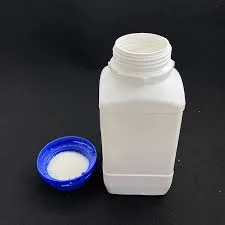Ammonium Thiocyanate An Overview
Ammonium thiocyanate (NH4SCN) is a chemical compound that plays a significant role in various industrial applications and scientific research. It is an inorganic salt composed of ammonium ions (NH4+) and thiocyanate ions (SCN-). This versatile compound is colorless, highly soluble in water, and possesses a crystalline structure. Understanding its properties, applications, and safety measures is crucial for both industrial usage and laboratory settings.
Chemical Properties
Ammonium thiocyanate is typically found in the form of white crystalline granules or powder. It has a molecular weight of approximately 76.12 g/mol. When dissolved in water, it forms an acidic solution, which is noteworthy for various chemical processes. The compound is notably hygroscopic, meaning it can absorb moisture from the air, which can affect its storage and handling.
One of the striking features of ammonium thiocyanate is its endothermic behavior when dissolved in water. This property allows it to absorb heat from its surroundings, causing the temperature of the solution to decrease significantly. This characteristic makes it useful in applications such as cold packs and certain refrigeration processes.
Applications
Ammonium thiocyanate is utilized in various fields, including agriculture, pharmaceuticals, and analytical chemistry. In agriculture, it serves as a nitrogen-rich fertilizer, providing essential nutrients to crops. The thiocyanate ion is also a precursor for producing various agrochemicals that improve plant health and yield.
ammonium thio cyanate

In the pharmaceutical industry, ammonium thiocyanate is utilized in the synthesis of various active pharmaceutical ingredients (APIs). Its role in organic reactions, such as the formation of thiocyanate derivatives, enhances the development of medicines and therapeutic agents.
Moreover, in analytical chemistry, ammonium thiocyanate is employed as a reagent in various tests, including cyanide detection. It can react with metal ions to form insoluble complexes, facilitating their identification and quantification. This property makes it a valuable tool in environmental monitoring and quality control processes.
Safety Considerations
While ammonium thiocyanate is widely used, it is essential to handle it with care. The compound can be harmful if ingested or inhaled, as it may cause irritation to the eyes, skin, and respiratory system. Therefore, appropriate safety measures, including personal protective equipment (PPE) such as gloves and masks, should be used during its handling.
Proper storage is also vital to maintaining the integrity of ammonium thiocyanate. It should be kept in a cool, dry place, away from incompatible substances such as strong acids and oxidizers. Additionally, due to its hygroscopic nature, containers should be sealed tightly to prevent moisture absorption.
Conclusion
Ammonium thiocyanate is a multifunctional compound with diverse applications across several industries. Its unique chemical properties and reactions make it invaluable for agricultural, pharmaceutical, and analytical purposes. However, safety precautions must be prioritized to ensure safe handling and usage in both industrial and laboratory environments. As research continues to explore its potential, ammonium thiocyanate remains an essential component in the chemical toolbox, contributing to advancements in various fields.

